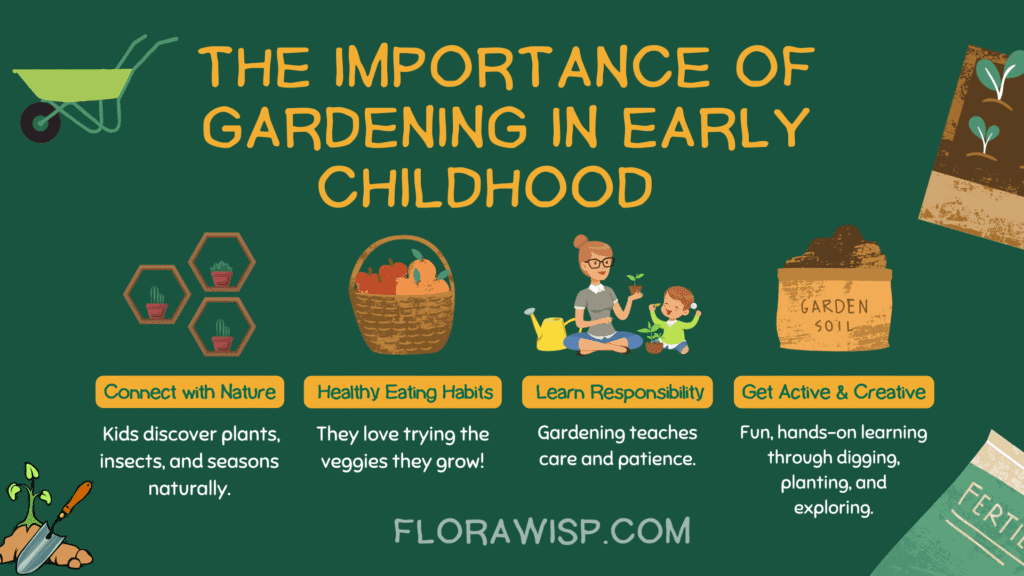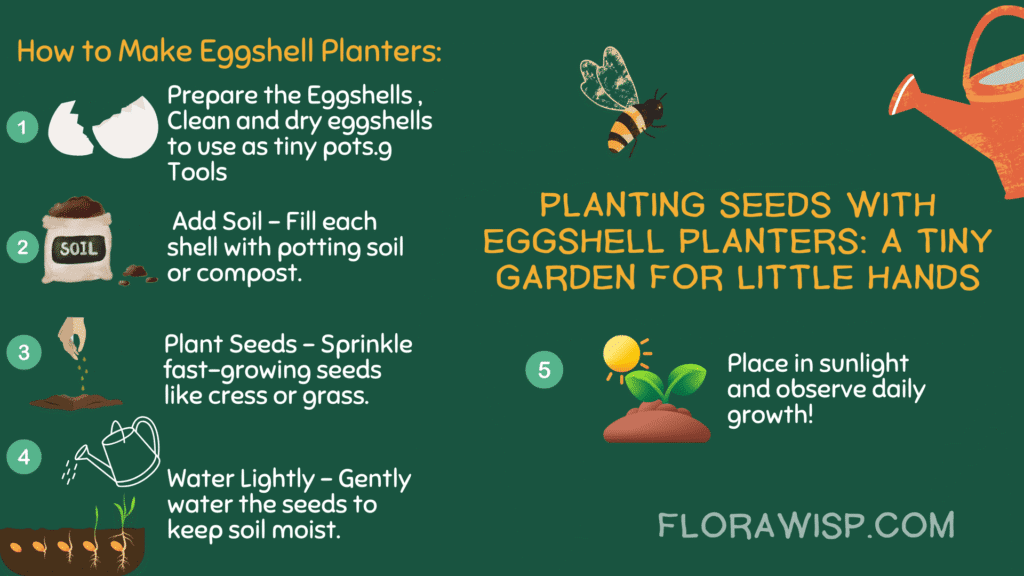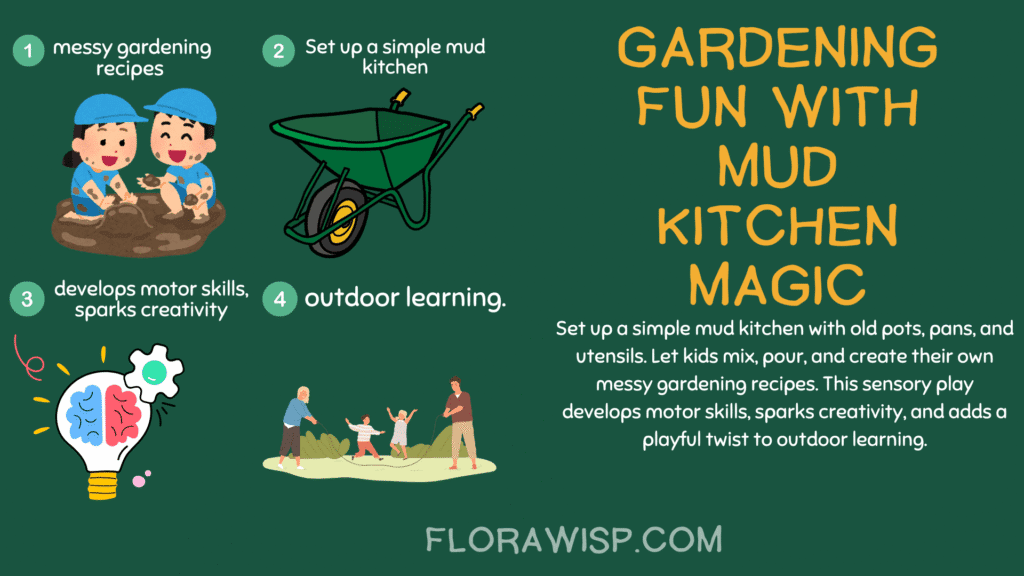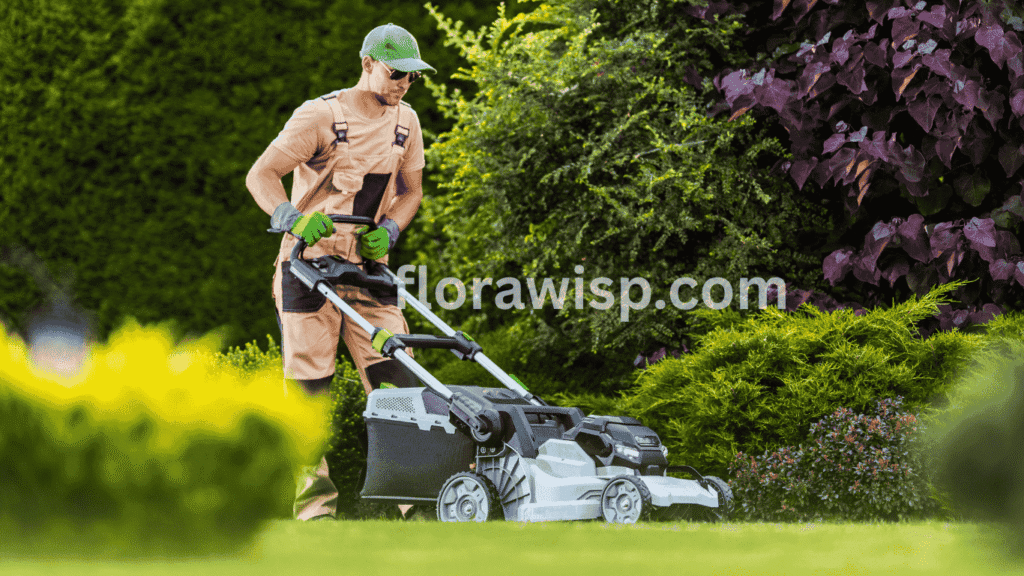The best gardening activities for preschoolers are simple, sensory-rich, and hands-on like planting sunflower seeds, making a mini herb garden, or painting garden pots. If you’re exploring a gardening theme for preschoolers at home or in the classroom, start with nature walks, soil play, or growing fast-sprouting seeds like beans in a jar. Want planting activities for preschoolers? Stick to big, easy-to-handle seeds (sunflower, pumpkin, peas), use kid-safe tools, and let them water and watch the plants grow.
These activities aren’t just fun they help kids build patience, confidence, and motor skills while connecting with nature. I’ve used these same ideas with preschoolers in small backyards and city apartments, and they work beautifully with just a few supplies and a bit of curiosity. In this guide, you’ll find 20 joyful, low-prep gardening ideas that fit any space and any season plus real-life tips to make it stress-free and rewarding, even if you’ve never gardened before.
In This Article
The Importance of Gardening in Early Childhood

Gardening isn’t just about putting seeds into soil and watching plants grow it’s a rich, hands-on experience that helps preschoolers explore the world around them and develop essential life skills. Incorporating gardening activities for preschoolers into daily routines can be incredibly beneficial. These gardening activities for preschoolers not only foster curiosity and responsibility but also support sensory development, motor skills, and emotional growth in many ways.
Enhance Motor Skills:
When little hands dig into the dirt, carefully plant seeds, or gently water their growing plants, they’re strengthening both fine and gross motor skills. These physical movements, whether it’s scooping soil or holding a tiny watering can, build coordination and hand strength, which are vital for tasks like writing or tying shoelaces. From my years working with young gardeners, I’ve seen how excited kids get when they master these simple yet important actions.
Encourage Healthy Eating:
One of the most wonderful benefits of involving children in gardening is how it influences their food choices. When preschoolers participate in growing fruits, vegetables like planting tomato seeds, cherry tomatoes or herbs, they’re much more likely to develop an interest in eating what they helped nurture. Even simple indoor gardening activities like sprouting herbs on a windowsill can spark excitement about fresh, healthy foods. I’ve noticed that kids who plant their own cherry tomatoes or lettuce often become little food adventurers, eager to taste the fruits of their labor.
Boost Cognitive Development:
Gardening is a natural science lesson waiting to happen. When preschoolers engage in planting seeds and watch as those tiny beginnings sprout and grow, they begin to grasp concepts like life cycles, growth stages, and cause and effect. They learn patience as they wait for plants to mature and gain an early appreciation for nature’s rhythms. This hands-on exploration builds curiosity and critical thinking that goes far beyond the garden bed.
Foster Emotional Growth:
There’s something deeply nurturing about caring for a living thing. Through consistent gardening activities for preschoolers, children learn responsibility and empathy checking on their plants daily, noticing when they need water or sunlight, and understanding that living things depend on care to thrive. This teaches patience, too, as plants don’t grow overnight. In my experience, kids often form a special bond with their plants, feeling proud and connected to their tiny green friends.
Incorporating gardening activities for preschoolers into early childhood education is an excellent way to cultivate curiosity, creativity, and responsibility. Whether you’re exploring engaging gardening crafts for preschoolers, or singing along with gardening songs for preschool, these experiences will inspire hands-on learning both indoors and outdoors.
20 Creative Gardening Activities For Preschoolers
Introducing gardening to preschoolers isn’t just about planting seeds; it’s about planting curiosity, creativity, and life lessons. As a teacher-gardener, I’ve seen firsthand how gardening activities for preschoolers spark joy, build patience, and strengthen a child’s connection to the natural world. Below is a thoughtfully expanded and SEO-optimized list of hands-on gardening activities for preschoolers that blend learning, play, and nature.
1. Build a Friendly Scarecrow
This playful project invites preschoolers to build a friendly scarecrow using old gardening clothes and recycled materials. It’s more than just crafting it gives kids a sense of ownership in their garden space. Watching children give their scarecrow a name and a story becomes a fun part of our gardening theme every season. It also encourages collaboration and creativity in a hands-on, purposeful way.
2. Eggshell Planters: A Tiny World of Gardening

When I first tried this with my preschoolers, I wasn’t sure how excited they’d be about such tiny containers. But watching them carefully scoop soil into cracked eggshells and gently planting seeds like cress or basil was truly special. These fragile planters teach care, patience, and introduce life cycles a key part of our gardening lesson plans for preschoolers. It’s a great first step into gardening.
3. DIY Bird Feeders: Welcome Nature’s Visitors
Using peanut butter, birdseed, and toilet paper rolls, we create simple bird feeders that hang from trees or fences. The best part? Children stay alert all day, waiting for feathered friends to arrive. This activity supports observation and fosters appreciation for wildlife, making it one of the most rewarding gardening activities for kids I’ve used to connect nature and nurture.
4. Grow a Colorful Salad Garden
There’s something magical about seeing kids eat what they’ve grown. When we planted radishes, lettuce, and cherry tomatoes together, many of my students tried vegetables for the first time. These kinds of gardening activities for preschoolers build responsibility and curiosity while introducing healthy habits and joyful eating straight from the soil.
5. Egg Carton Greenhouses
I’ve reused countless egg cartons over the years for this indoor gardening activity. Children fill the cups with soil and seeds, then cover them with plastic wrap to mimic greenhouse conditions. It’s a fantastic way to demonstrate humidity, warmth, and care in seed growth. We observe daily changes, adding it as a regular element in our classroom gardening theme.
6. Seed Observation Jars
This is one of my go-to gardening activities for preschoolers when introducing plant science. We use clear jars and damp paper towels to show roots and shoots emerging from beans. Seeing the awe on children’s faces when the first sprout curls upward makes all the setup worthwhile. It brings concepts like photosynthesis and water absorption into the real world.
7. Choose Your Seeds
Letting preschoolers choose their own seeds has made a huge difference in their engagement. Whether they pick sunflowers or lettuce, the excitement and personal investment are unmatched. It’s one of the simplest gardening activities for preschoolers, but it helps foster independence, responsibility, and joy.
8. Garden Scavenger Hunt
Scavenger hunts are always a hit, and the garden is full of hidden treasures. I’ll create cards with items like “a fuzzy leaf,” “something that smells nice,” or “a crawling bug.” This encourages movement, attention, and vocabulary development, making it a favorite among our gardening activities for kids.
9. Mud Kitchen Play
Our mud kitchen was built with old gardening utensils, pots, and pans. Kids mix water, soil, flowers, and leaves to create “garden soups” and “leaf pies.” It’s messy, yes, but it’s rich in sensory exploration, creativity, and fine motor development. Gardening fun doesn’t always mean planting it means engaging with the garden in every possible way.
10. Create a Magical Fairy Garden
Fairy gardens never lose their charm. With small containers, pebbles, moss, and figurines, preschoolers design magical miniature landscapes. These kinds of gardening crafts for preschoolers encourage imagination, storytelling, and gentle plant care. Some children even leave notes or fairy gifts, making this a meaningful addition to our gardening theme.
11. Harvest Together
One of the most fulfilling gardening activities for preschoolers is the harvest. I still remember the first time a little one tugged a carrot from the soil, wide-eyed and amazed that something they had cared for was now ready to eat. Involving children in the harvest creates a powerful connection between effort and reward. It teaches patience and consistency, as they see the full cycle of planting, tending, and gathering. The joy and pride in their faces as they wash, slice, and taste their harvest are unmatched—and it makes gardening more than a lesson; it makes it an experience.
12. Plant for Pollinators
Introducing preschoolers to pollinators can be magical. I’ve found that planting bright, nectar-rich flowers like zinnias, cosmos, and marigolds is not only visually stimulating but incredibly educational. These flowers draw butterflies and bees into the garden, offering endless opportunities to observe. We often sing little gardening songs about buzzing bees and fluttering wings, blending rhythm and nature. This simple act of planting for pollinators also opens up conversations about ecosystems and kindness to creatures that help our gardens grow.
13. DIY Stepping Stones
One of my favorite long-lasting projects in our preschool garden is making stepping stones. Children love the hands-on creativity of embedding pebbles, shells, and glass beads into wet cement. Each stone becomes a marker of their growth and involvement. These stepping stones serve both a decorative and emotional purpose—they ground the garden in the children’s presence. This type of gardening art activity for preschoolers blends self-expression with functionality, and every time we walk past them, it reminds us of the journey.
14. Insect Explorations
At first, getting preschoolers excited about bugs can be tricky some are curious, others squeamish. But with gentle guidance and tools like magnifying glasses and bug catchers, I’ve watched even hesitant children become brave explorers. From ladybugs crawling across fingers to ant trails being traced with delight, insect observation develops respect for nature. It also supports gardening lesson plans for preschoolers by encouraging close looking, patience, and compassion for the smallest members of our garden family.
15. Pretend Farmer’s Market
After harvesting, we often create a pretend farmer’s market in our play area. Using baskets and homemade signs, kids “sell” their produce to one another, learning basic math, communication, and teamwork. It transforms gardening into imaginative play and reinforces the idea that what they grow has value. These market days have become highlights of our season and remain one of the most joyful gardening activities for preschoolers I’ve ever facilitated.
16. Shadow Art with Plants
This is a quiet, artistic moment in the midst of our busy garden days. We lay out large sheets of paper and let the sun cast shadows of nearby plants. Kids trace the outlines, later filling them in with colors or textures. It’s reflective, calming, and builds observation skills. I love how this simple gardening art activity offers a new way to look at plants not just as things we care for, but as shapes, forms, and stories.
17. Garden-to-Table Recipes
Turning garden harvests into snacks is something that never fails to excite preschoolers. Whether it’s mint lemonade on a hot day or a cherry tomato salad, these experiences close the loop between garden and plate. They learn where food comes from and take pride in making something shareable. These hands-on activities reinforce how gardening activities for preschoolers can instill lifelong healthy habits.
18. Play “I Spy” in the Garden
This classic game becomes a powerful learning tool when adapted for the garden. We spy shapes, colors, smells, and textures, helping build vocabulary and attention. On rainy days, we adapt it for our classroom using potted plants as part of our indoor gardening activity toolkit. The kids love the continuity and connection to their outdoor adventures.
19. Herb Sensory Exploration
Introducing herbs like basil, mint, or lavender opens a new world of discovery. Kids gently rub leaves and smell the scents, sometimes giggling at the surprise of strong aromas. This sensory-rich gardening activity is always a favorite and deepens their understanding of plant life beyond just visuals.
20. Boot Planters

Repurposing old gardening boots into planters is both fun and meaningful. Preschoolers love painting the boots in wild colors, then filling them with soil and seedlings. These quirky planters showcase the blend of sustainability, creativity, and responsibility that’s at the heart of gardening crafts for preschoolers. Every time I see those painted boots, I’m reminded how far young gardeners can go with just a little guidance and imagination.
Integrating Gardening into the Curriculum
Gardening can be woven into various educational areas:
- Science: Study plant life cycles and photosynthesis.
- Math: Measure plant growth and count seeds.
- Art: Create garden-inspired crafts and drawings.
- Language: Read books about gardening and write simple garden journals.
Indoor Gardening Activities For Preschoolers
For those without outdoor space, indoor gardening is a viable alternative:
- Windowsill Herb Gardens: Grow herbs like basil and chives in small architecturaldigest.com
- Sprouting Seeds: Use jars to grow beans or lentils.
- Terrariums: Create miniature gardens in glass containers. Penn State Extension
- Microgreens: Grow quick-harvest greens in shallow trays.
Safety Tips for Gardening with Preschoolers
Gardening with little ones is such a joyful experience, but it’s essential to keep their safety at the heart of every activity. As someone who’s spent years tending to both plants and young gardeners, I’ve gathered a few key tips to make the experience safe and memorable. Whether you’re just starting or planning regular gardening activities for preschoolers, these safety steps will help ensure every moment is enjoyable and secure.
Supervision: Keep a Watchful Eye
Preschoolers are naturally curious, and in the garden, curiosity can lead them to explore places or things they shouldn’t. Always stay close and supervise their play, whether they’re digging in the dirt, watering plants, or collecting leaves. Make it a shared adventure where you can guide their discoveries safely.
Tool Safety: Choose the Right Tools for Little Hands
Not all tools are made for small fingers. Invest in child-friendly, lightweight gardening tools with rounded edges, things like small spades, rakes, and watering cans designed for preschoolers. I’ve found that when kids have their special tools, they not only feel more involved but also stay safer and more focused during gardening activities for preschoolers.
Sun Protection: Shield Them from the Sun
Gardens can be suntraps, especially during peak hours. Before heading out, slather on a good sunscreen and make sure the kids wear wide-brimmed hats. If possible, set up shady areas where they can take breaks under a tree or a sunshade. I always keep a basket of hats and extra sunscreen near our garden gate, it’s a must during sunny gardening activities for preschoolers.
Hydration: Keep the Water Flowing
Gardening can be thirsty work, and little ones might not always remember to pause and drink. Bring a reusable water bottle into the garden, and encourage regular sips. I like to make it a game, “Water for the plants, water for you!” to remind them to stay hydrated.
Allergy Awareness: Know Your Plants and Your Kids
Some kids may have sensitivities to certain plants or pollen. Before starting your gardening adventures, check if your little helpers have any known allergies. Avoid planting high-allergen plants or those with strong scents, and teach kids to wash their hands after touching plants and soil. I always keep a little hand-washing station nearby with soap and water to make it easy and fun.
FAQs
Q. What are some fun and safe gardening activities for preschoolers to enjoy?
Gardening activities for preschoolers can be a joyful, hands-on learning experience. Activities like planting colorful flowers, making DIY bird feeders from recycled materials, or building a miniature fairy garden spark curiosity while improving motor skills. When I introduced my niece to seed planting, her excitement over daily plant changes turned into a fun morning routine. These activities are not only educational but also perfect for developing patience and a love for nature. For a step-by-step guide, check out our beginner tips on planting flowers.
Q. Which beginner-friendly plants are best to grow with young kids?
When gardening with children, choose fast-growing, safe, and sensory-friendly plants. Sunflowers are a favorite they sprout quickly and grow tall, keeping kids engaged. Cherry tomatoes and leafy greens like lettuce are edible options that make harvesting extra fun. I’ve had great success growing mint with my nephew he loved the scent and enjoyed using the leaves in lemonade. These plants build confidence in little gardeners and make the process rewarding.
Q. Are there any simple indoor gardening ideas for children?
Yes! Indoor gardening offers a mess-free, weatherproof way to introduce kids to plants. Growing herbs like basil or parsley on sunny windowsills is a great start. Kids also enjoy sprouting beans in jars or creating easy terrariums using plastic containers. When I helped my younger cousin grow microgreens indoors, she was amazed to see how quickly they appeared. These indoor ideas are perfect for year-round discovery and learning.
Q. How does gardening help preschoolers learn and grow academically?
Gardening goes far beyond playing in the dirt it naturally supports early childhood development. Kids learn science through plant life cycles, math through measuring and counting seeds, and art through creative garden layouts. I once used flower planting to teach colors and time concepts with my niece “How many days until the bloom opens?” It’s a hands-on way to nurture responsibility, curiosity, and environmental awareness from a young age.
Q. What are the best planting and gardening activities for 4-year-olds?
A. Fun garden ideas like planting sunflower seeds, making fairy gardens, or creating bird feeders are great for preschoolers and 4-year-olds. These activities improve fine motor skills, teach responsibility, and make outdoor play meaningful and joyful.
Final Thoughts
Gardening activities for preschoolers is such a rewarding journey. It’s not just about growing plants, but also about nurturing curiosity, creativity, and a love for nature. Remember, patience is key! Sometimes the best moments come not from the perfectly planted seed, but from the messy hands and joyful laughter along the way.
From my own experience, one simple trick that always brings extra fun is turning gardening into a story. When planting seeds, I like to tell the kids that each seed is a tiny treasure with a secret mission to grow into something wonderful. It makes the activity magical and keeps them excited about watching those little sprouts peek through the soil.
So, embrace the little messes, celebrate every tiny leaf, and most importantly, enjoy the precious time growing alongside your little gardeners. If you’re ready to try growing real food with your kids, cherry tomatoes are a great first crop, they’re colorful, quick to harvest, and fun to snack on straight from the vine. For region-specific tips, check out our guides on Growing Tomato Plants in Florida and Planting Tomatoes in Texas to get started with a kid-friendly tomato patch.
Gardener, M.Sc. Horticulture
Elara Bennet is a gardening writer from Austin, TX, passionate about sustainable lawns and blooms. Read full bio →








